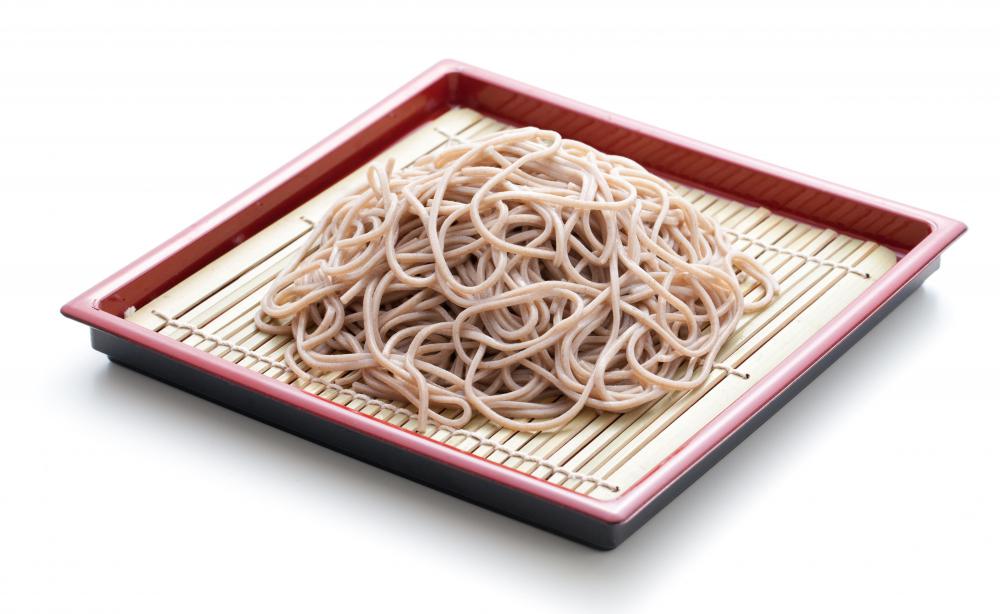At WiseGEEK, we're committed to delivering accurate, trustworthy information. Our expert-authored content is rigorously fact-checked and sourced from credible authorities. Discover how we uphold the highest standards in providing you with reliable knowledge.
What Are Japanese Noodles?
Japanese noodles are, quite simply, noodles used in Japanese cuisine. In Japanese cooking, noodles are a main staple, much like rice, and they are often used as one of the focal points of a dish. Japanese noodles are sometimes served cold with a dipping sauce, but they are more frequently used in hot or cold soups, accompanied by ingredients such as kelp, mushrooms, and fish cake. There are many different styles of Japanese noodles, including ramen, soba, udon, shirataki, and somen.
Ranging in thickness and flavor, Japanese noodles form the base of thousands of different dishes. They are usually made from a wheat-based flour, although some styles are made from the roots of plants indigenous to Japan. In Japanese households and restaurants, it is common for a soup to be served hot during cold winter months, and cold during the summertime, when temperatures rise.

Ramen noodles are by far the most widely recognized Japanese noodle, although they originally came from China. They are most often served in a hot meat- or fish-based broth with toppings such as mushroom, green onion, and egg. Ramen noodles owe their popularity to the invention in the late 1950s of instant ramen noodles, which have since become a worldwide phenomenon.

Soba noodles are another type of Japanese noodle. They are traditionally served in one of two ways. During the summer, soba noodles are served cold alongside a dipping sauce known as soba tsuyu. In the winter, they are served in a hot dashi-based broth. Although many assume that the Japanese dish yakisoba contains soba noodles, traditional yakisoba contains a distinct variety of noodle that is actually closer in style to ramen.
Udon is possibly the second-most widely recognized Japanese noodle. It is known for its thickness, and it is a popular fast food item in Japanese style restaurants. One well-known udon dish is a hot soup made with a mild broth and topped with thinly sliced scallions. Kake udon, as it is called, is sometimes served with toppings such as tempura or tofu.
Shirataki noodles are well-known for their low-calorie and low-carbohydrate properties. They can be found in two different forms: "wet" and "dry." "Wet" shirataki noodles are packaged in liquid and have a relatively short shelf-life when compared with "dry" shirataki noodles. One preparation of shirataki noodles involves dry roasting the noodles before drizzling them with oil or sauce. Shirataki are also a component of the Japanese dish sukiyaki.
Somen noodles are thin, white noodles that are almost always served cold and can be used in salads or served with a dipping sauce. They are much more popular in the summer than in winter. When served in a salad, they are usually tossed with shredded lettuce, green onions, and scrambled eggs, then topped with sesame seeds and a vinegar-based dressing.
Japanese noodles are also popular in Asian fusion cooking, which is a cooking style that combines elements of culinary traditions from various Asian countries. In Asian fusion cooking, Japanese noodles may be served with various elements of some other Asian-style cuisine, such as Korean, Chinese, or Cambodian. Asian fusion tends to be popular among young urbanites from large cities with diverse Asian populations.
AS FEATURED ON:
AS FEATURED ON:












Discuss this Article
Post your comments